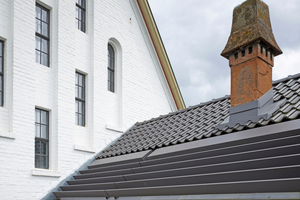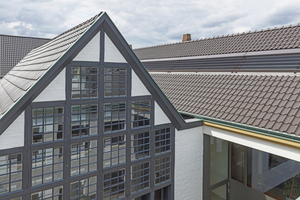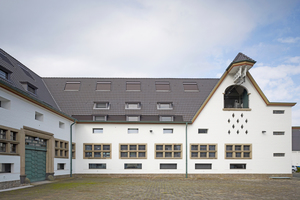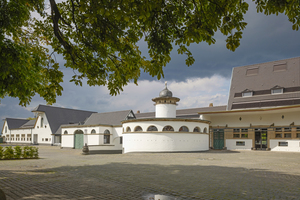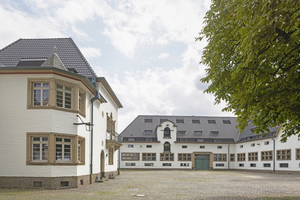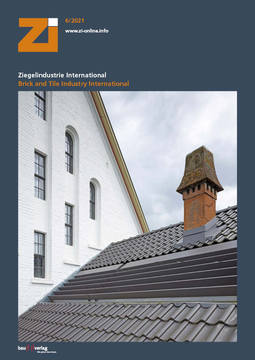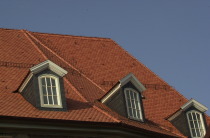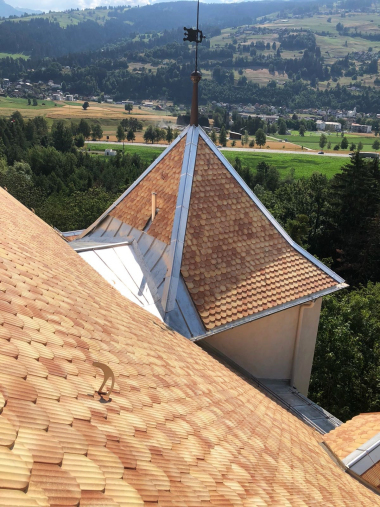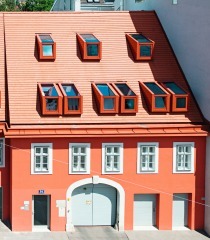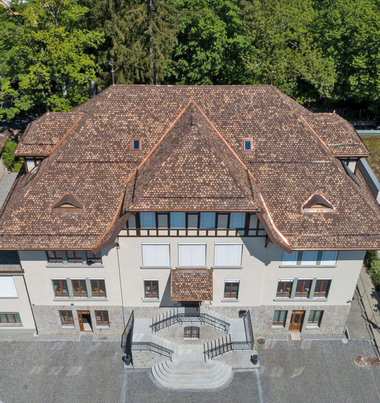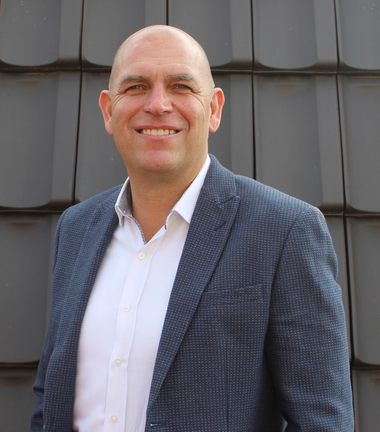Heritage-sympathetic conversion
The model example of the conversion of Gut Maarhausen, a country estate, shows how heritage-sympathetic refurbishment can succeed from design to realization. “Here, despite the conflicting priorities of historical building preservation and the concept for new usage, intelligent and technically convincing solutions have been devised that may point the way for similar projects,” emphasizes Gerald Laumans, Managing Partner at Gebr. Laumans GmbH & Co. KG.
Refurbishment of a former manor estate
The family company based in Brüggen-Bracht manufactured the roofing tiles for the heritage-sympathetic refurbishment of the former manor estate, which today accommodates a modern office and business campus. On around 10 000 square metres, there are workshops, offices and showrooms for up to 30 companies from different branches and in various sizes with representative workplaces. However, the charm and history of the manor estate, the origins of which reach back to the time around 1 000 AD, have been preserved.
Careful roof refurbishment
The roof refurbishment at Gut Maarhausen stands as an example for the relevance of a careful approach and the associated quality of a heritage-sympathetic conversion. The project was associated with the particular challenge of bringing light into the former agricultural buildings, without giving up the uniform roof surfaces that characterize the historical buildings.
To provide the top floors and imposing halls with sufficient natural light, the architects trint + kreuder designed glazed panels of light that they have concealed under horizontal slats made of dark grey metal which are installed flush with the roof surface. This intelligent solution ensures ample light in the interior and permits the users of the buildings to look up at the sky.
“At the same time, the large roof surfaces of the building still appear closed, which benefits the overall visual impression and complies with the requirements of the authorities for the preservation of historical buildings,” says Gerald Laumans, with obvious enthusiasm for this historical and forward-pointing refurbishment project.

